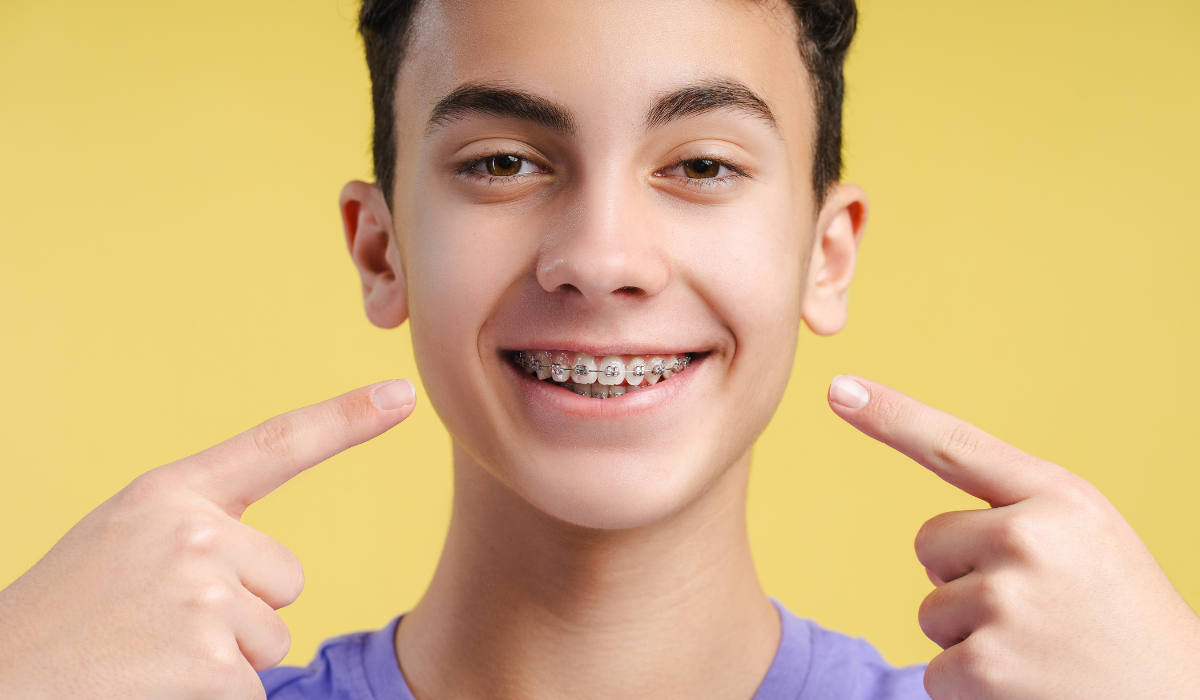Thinking about getting braces but feeling overwhelmed by all the options? Don’t stress—we’ve got you covered! From achieving the perfect smile to improving oral health, braces are a game-changer for many people. But with so many types, costs, and processes to consider, it’s easy to feel lost.
This comprehensive guide will walk you through everything you need to know about teeth braces, from what they do to the benefits, pricing, and care tips. By the end, you’ll be ready to choose the best option for your smile. And hey, if you’re still unsure, consult an orthodontic professional to help make the best decision for you!
What Are Teeth Braces?
Teeth braces are orthodontic devices designed to straighten teeth and correct bite issues by applying continuous, gentle pressure. They slowly move teeth into their ideal positions over time, resulting in a healthier, more functional, and more photogenic smile!
Who Needs Braces?
- Children and Teens: Braces are commonly used during developmental stages to fix alignment issues early.
- Adults: It’s never too late! Many adults opt for braces to improve their dental alignment and aesthetics.
- Anyone with Orthodontic Issues: Common issues include crooked teeth, overbites, underbites, and spacing problems.
Pro Tip 💡: Early assessments from an orthodontist (around age 7) can help determine if braces will be needed down the line!
Types of Teeth Braces
Choosing the right braces often comes down to lifestyle, preferences, and budget. Below is a breakdown of the most common types of braces.
1. Metal Braces
- Description: The classic! Metal brackets and wires are attached to the teeth.
- Pros: Durable and effective for all orthodontic issues, Typically the most affordable option.
- Cons: Highly visible, Can cause some discomfort.
Best For: Tough cases that require major alignment corrections.
2. Ceramic Braces
- Description: Similar to metal braces, but the brackets are tooth-colored and less noticeable.
- Pros: More discreet than traditional braces, Less visible in photos.
- Cons: Slightly more expensive, More fragile than metal braces.
Best For: Teens and adults seeking subtle but effective treatment.
3. Lingual Braces
- Description: These are attached to the back (lingual side) of your teeth, making them hidden from view.
- Pros: Completely invisible from the front, Effective for most cases.
- Cons: Can be harder to clean, May cause tongue irritation.
Best For: Anyone focused on aesthetics and invisibility.
4. Self-Ligating Braces
- Description: These use a clip system instead of elastic bands to hold the wire in place.
- Pros: Easier to clean, Fewer orthodontic visits needed.
- Cons: Limited color options for kids.
Best For: Busy individuals who want a low-maintenance option.
5. Clear Aligners (e.g., Invisalign)
- Description: Removable, clear trays custom-fit to your teeth.
- Pros: Nearly invisible, Removable for eating and brushing.
- Cons: Requires discipline to wear 20+ hours/day, Not suitable for severe cases.
Best For: Adults and teens wanting a discreet, flexible solution.
| Feature | Metal Braces | Ceramic Braces | Lingual Braces | Self-Ligating Braces | Clear Aligners |
| Visibility | High | Low | Invisible | Low | Invisible |
| Comfort | Moderate | Moderate | Low | Moderate | High |
| Treatment Time | 18-36 months | 18-36 months | 18-36 months | 20-36 months | 12-24 months |
| Cost | Low | Moderate | High | Moderate | High |
How Do Braces Work?
The process is quite simple! Braces work by exerting continuous pressure, gradually moving teeth into the correct position. Here’s what you can expect:
- Consultation – This involves an exam, X-rays, and a discussion of your options.
- Fitting – Your orthodontist will carefully place brackets and wires on your teeth.
- Adjustments – Every 4-8 weeks, adjustments are made to keep the pressure effective.
🎯 Treatment Time: Typically 18-24 months, but this depends on factors like the type of braces, the complexity of treatment, and the patient’s age.
Benefits of Braces
- Cosmetic: A straighter smile improves confidence and aesthetics. 📸✨
- Health: Prevents gum disease and cavities by aligning your bite for easier cleaning, Improves chewing and speaking functions.
- Self-Confidence: A beautiful smile boosts self-assurance in both personal and professional settings!
Caring for Braces
Brushing and Flossing
- Use a soft-bristle toothbrush and fluoride toothpaste. Don’t forget those hard-to-reach spots!
- Flossing is tricky but manageable with floss threaders or water flossers.
Eating Tips
- 🥗 Enjoy soft foods like soup, pasta, and yogurt.
- 🛑 Avoid sticky, hard, or crunchy foods (bye-bye, caramels and popcorn!).
Handling Emergencies
Got a wire poking out? Or a loose bracket?
- Use orthodontic wax for immediate relief.
- Call your orthodontist for repairs.
How can I maintain my results after braces?
Anyone who wears braces will need to wear a teeth retainer when they’re done with treatment. A retainer prevents your teeth from shifting back into their old positions.
There are many types of retainers. Your dentist or orthodontist will help choose one that’s right for you.
When To Call the Doctor
When should I call my dentist or orthodontist?
Call your healthcare provider if you have:
- Pain that doesn’t go away with medication.
- Broken wires or brackets.
- Trauma to your mouth or face.
- Bleeding or infection in your gums.
Common Questions About Braces
Do Braces Hurt?
You might experience mild discomfort after adjustments, but this can be managed with over-the-counter pain relief.
Invisalign vs. braces: Which option is right for me?
This is something only your dentist or orthodontist can tell you. But generally, Invisalign can correct most mild to moderate orthodontic issues. If your case is severe, traditional braces might be more suitable.
Can I buy special floss for braces?
Yes, there are several products on the market that make flossing with braces easier, including:
- Floss threaders.
- Dental picks.
- Orthodontic flossers.
- Interproximal brushes (tiny brushes that fit between your teeth).
- Water flossers.
Ask your dentist or orthodontist for product recommendations.
Can you chew gum with braces?
Yes, you can chew sugarless gum. Be sure to shop for brands that have the ADA Seal of Acceptance.
Can Adults Get Braces?
Absolutely! Many adults are choosing braces or clear aligners to achieve their dream smile.
Invisalign vs. Traditional Braces?
Clear aligners are more discreet but require commitment. Traditional braces are more effective for complex corrections.
Straighten Your Smile Today
Braces are more than just a cosmetic fix—they’re an investment in your confidence and long-term dental health. Whether you’re a parent deciding for your child or an adult finally ready to fix their alignment, braces are worth considering.
Want expert advice tailored to you? Schedule a consultation with an orthodontist today and take the first step towards your dream smile!
Visit: Health Fable for more blogs.





